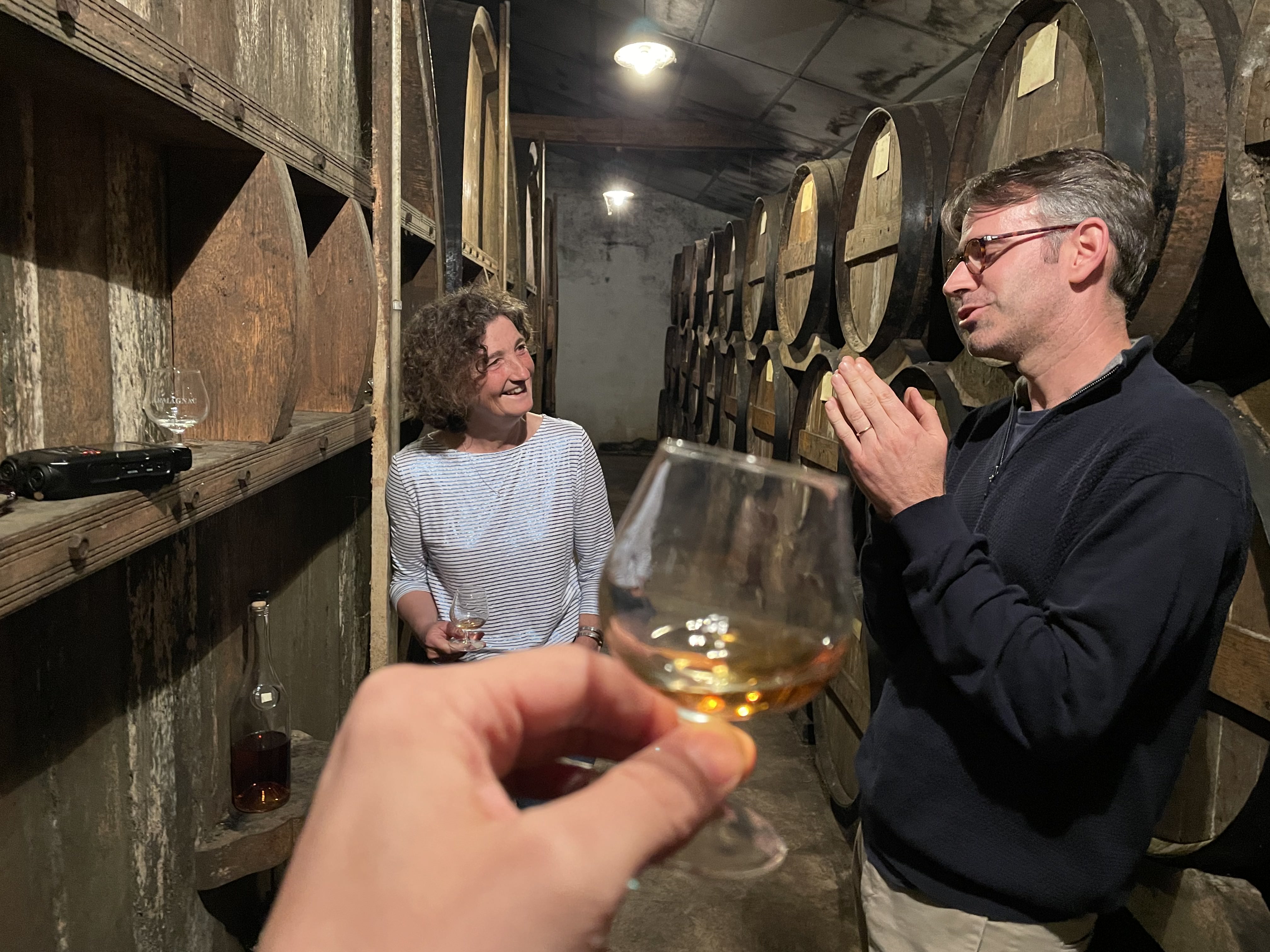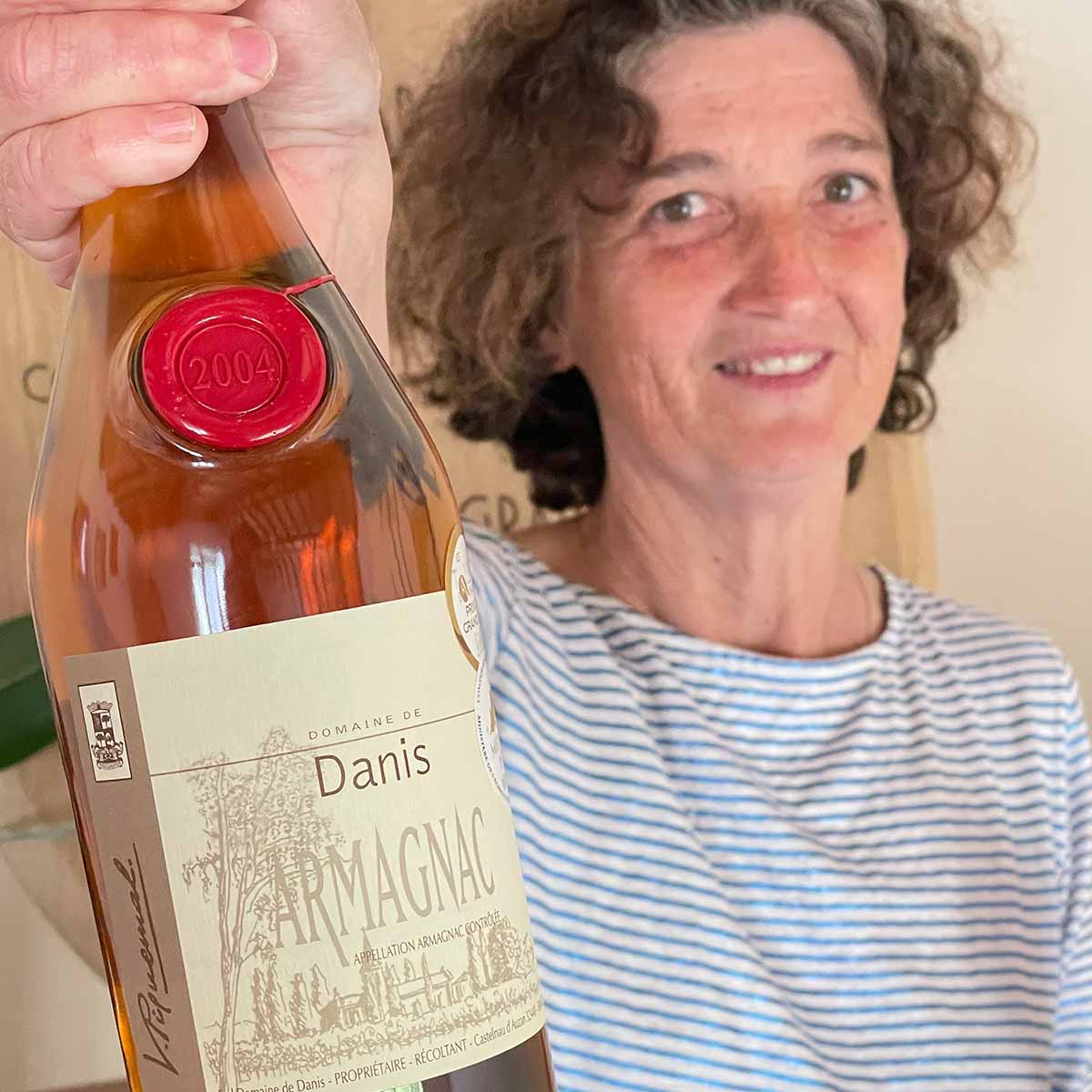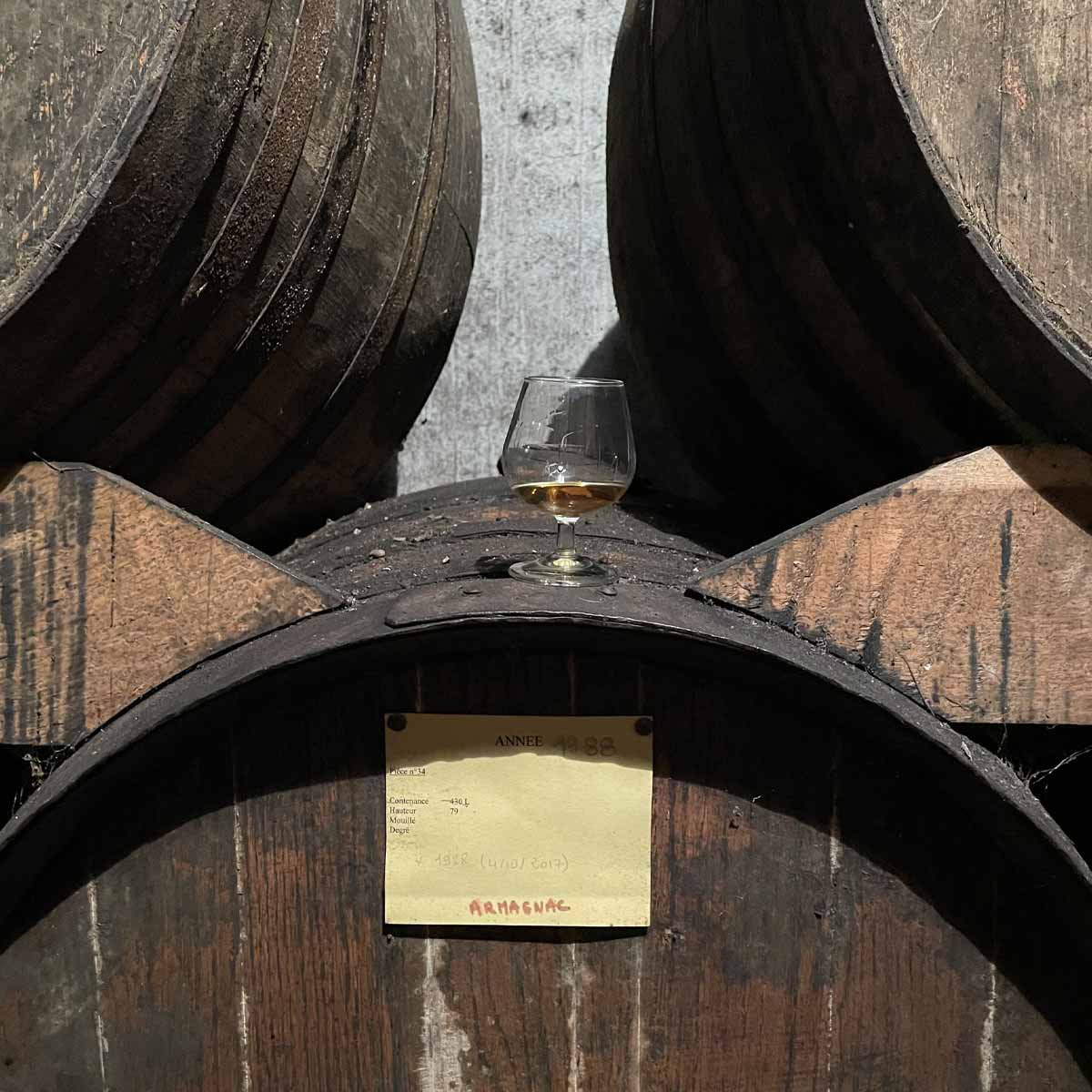June 3, 2022 was the day for Domaine de Danis, but another late summer episode followed in the region on August 16, although that second incident did not impact the domaine’s vines. Victoire makes a form with her hand to indicate the golf ball size of the hail. Without any exaggeration, there are still holes in certain parts of the chai’s rooftop due to this devastating hail incident. To put the gravity of this ravaging hail into perspective, in 2022 Domaine de Danis’ 40 hectares only produced 400 hectoliters of wine. The 6 hectares of gros manseng for Cotes de Gascogne production were entirely lost. Moreover, there was no folle blanche at all in 2022, a devastating blow for the domaine’s Armagnac production. Consequently, there was no distillation in 2022, and there will be no eventual 2022 vintage Armagnac. Moreover, some young vines were planted during the 2022 year. They got massacred by the hail and the intense sun that followed severely impacted the vine grafts, essentially melting the grafts.
It’s personal accounts like Victoire’s that serve as a reminder that the wines and spirits we love are ultimately governed by nature.
Getting back to 2022, there was however a sliver of good news from the year. In the 2022 Talents de l’Armagnac Concours des Grands Eaux-des-Vie Armagnac, the Domaine de Danis 2004 took home the Prix du Grand Jury. This combines all Armagnac from all production zones and age categories. To give some context, this uniquely Armagnac competition consists of 62 professional tasters blindly tasting and selecting 12 Grand Or winners, 24 Gold Medal winners, and 17 Silver Medal winners from different categories. Then for the main event, 12 experts choose and award the Prix du Grand Jury for the entire competition (the Oscar equivalent of Best Picture). So this is not some pay-to-play commercial spirits competition that will flood magazines and other press material. The trophy and plaque sit proudly in the entryway of the domaine. The trophy will be handed back at the end of the year, but Victoire already has her sights set on which Armagnac to present for 2023.






















